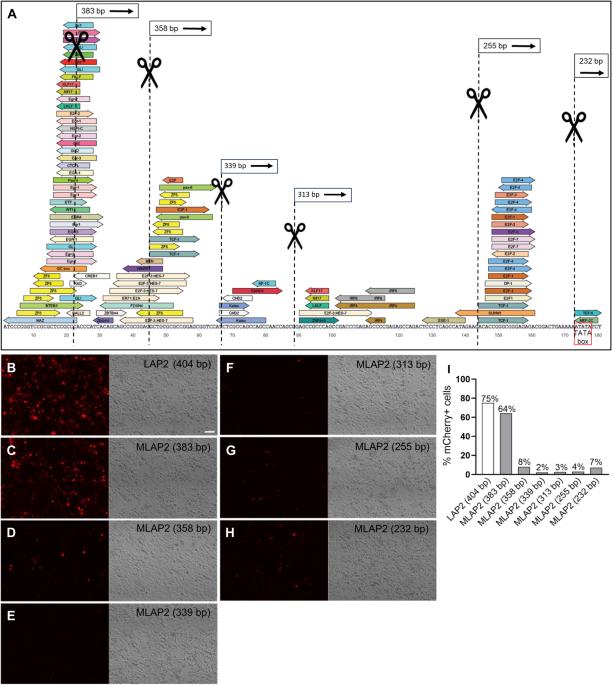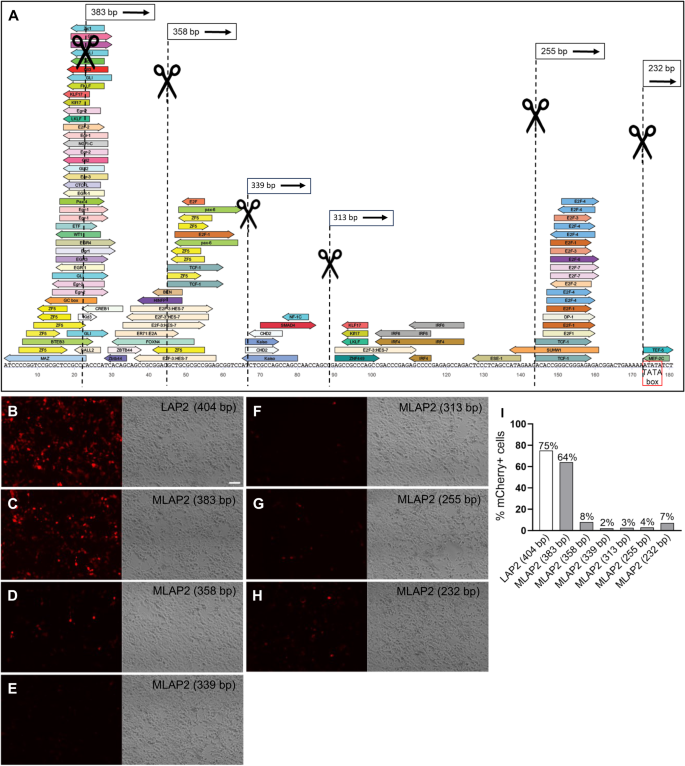Engineered compact pan-neuronal promoter from Alphaherpesvirus LAP2 enhances target gene expression in the mouse brain and reduces tropism in the liver
IF 4.6
3区 医学
Q1 BIOCHEMISTRY & MOLECULAR BIOLOGY
引用次数: 0
Abstract
Small promoters capable of driving potent neuron-restricted gene expression are required to support successful brain circuitry and clinical gene therapy studies. However, converting large promoters into functional MiniPromoters, which can be used in vectors with limited capacity, remains challenging. In this study, we describe the generation of a novel version of alphaherpesvirus latency-associated promoter 2 (LAP2), which facilitates precise transgene expression exclusively in the neurons of the mouse brain while minimizing undesired targeting in peripheral tissues. Additionally, we aimed to create a compact neural promoter to facilitate packaging of larger transgenes. Our results revealed that MiniLAP2 (278 bp) drives potent transgene expression in all neurons in the mouse brain, with little to no expression in glial cells. In contrast to the native promoter, MiniLAP2 reduced tropism in the spinal cord and liver. No expression was detected in the kidney or skeletal muscle. In summary, we developed a minimal pan-neuronal promoter that drives specific and robust transgene expression in the mouse brain when delivered intravenously via AAV-PHP.eB vector. The use of this novel MiniPromoter may broaden the range of deliverable therapeutics and improve their safety and efficacy by minimizing the potential for off-target effects.


来自Alphaherpesvirus LAP2的工程紧凑型泛神经元启动子增强了靶基因在小鼠脑中的表达并减少了在肝脏中的趋向性。
能够驱动有效的神经元限制性基因表达的小启动子是支持成功的脑回路和临床基因治疗研究所必需的。然而,将大型启动子转化为可用于容量有限的载体的功能性迷你启动子仍然具有挑战性。在这项研究中,我们描述了一种新版本的甲型疱疹病毒潜伏期相关启动子2 (LAP2)的产生,它促进了小鼠大脑神经元中精确的转基因表达,同时最大限度地减少了外周组织中不希望的靶向。此外,我们的目标是创建一个紧凑的神经启动子,以促进较大的转基因包装。我们的研究结果显示,MiniLAP2 (278 bp)在小鼠脑内的所有神经元中都能驱动有效的转基因表达,而在神经胶质细胞中几乎没有表达。与天然启动子相比,MiniLAP2减少了脊髓和肝脏的趋向性。肾脏和骨骼肌中未见表达。总之,我们开发了一个最小的泛神经元启动子,当通过AAV-PHP静脉注射时,它可以在小鼠大脑中驱动特异性和稳健的转基因表达。eB向量。这种新型MiniPromoter的使用可能会扩大可交付治疗药物的范围,并通过最大限度地减少脱靶效应的可能性来提高其安全性和有效性。
本文章由计算机程序翻译,如有差异,请以英文原文为准。
求助全文
约1分钟内获得全文
求助全文
来源期刊

Gene Therapy
医学-生化与分子生物学
CiteScore
9.70
自引率
2.00%
发文量
67
审稿时长
4-8 weeks
期刊介绍:
Gene Therapy covers both the research and clinical applications of novel therapeutic techniques based on a genetic component. Over the last few decades, significant advances in technologies ranging from identifying novel genetic targets that cause disease through to clinical studies, which show therapeutic benefit, have elevated this multidisciplinary field to the forefront of modern medicine.
 求助内容:
求助内容: 应助结果提醒方式:
应助结果提醒方式:


